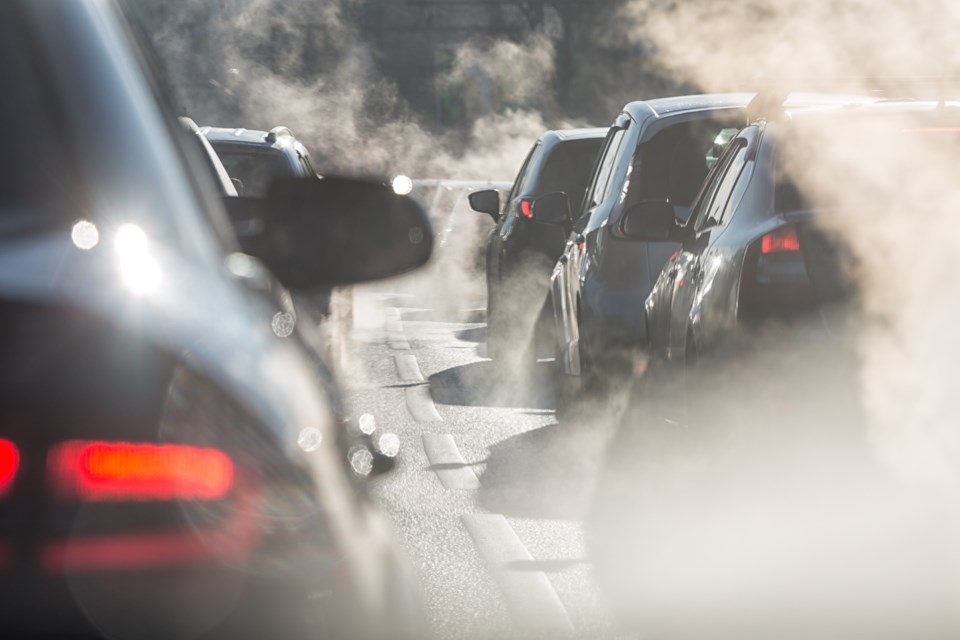NEWS RELEASE
GOVERNOR JARED POLIS
************************
Today, Governor Polis and cabinet members released the second version of the climate action plan to cut greenhouse gas (GHG) pollution in half by 2030, and make progress toward net-zero GHG pollution in Colorado by 2050. First released in 2021, the original Greenhouse Gas Pollution Reduction Roadmap (‘Roadmap’) laid out a set of near-term commitments to reduce emissions across economic sectors. Having completed more than 95% of the near-term actions from the original Roadmap, ‘Roadmap 2.0’ updates Colorado’s emissions forecast and lays out a new set of bold actions to save Coloradans money and continue making progress toward a clean energy future.
“Colorado has been a national model in bold climate action that improves air quality and protects our precious resources and open spaces. This updated, comprehensive Roadmap continues pushing our state forward in ways that will save Coloradans money, protect our air and water, and ensure a more sustainable future for Colorado,” said Governor Jared Polis.
The Roadmap identifies cost-effective strategies to reduce emissions from the largest emissions sources. The first Roadmap led to significant action during the last three years. Governor Polis signed dozens of bills that resulted from this plan, creating new grant programs and incentives, establishing new regulatory processes, and giving state agencies the resources and direction to act. Based on implementation of the first roadmap, as well as significant federal investment from two federal laws signed by President Biden and supported by the majority of Colorado’s Congressional delegation, the Infrastructure Investment & Jobs Act (IIJA) and the Inflation Reduction Act (IRA), Colorado is more than 80% of the way to meeting its statutory goal of a 50% emissions reduction by 2030 from 2005 levels. This new plan builds on that success.
“In a very short time, we’ve made remarkable progress toward meeting our climate goals,” said Colorado Energy Office Executive Director Will Toor. “But there is still work to do. Roadmap 2.0 pushes Governor Polis’ bold vision on this vital issue to new heights. We believe these new near-term actions will enable even greater nation-leading progress in addressing greenhouse gas pollution in Colorado.”
This updated roadmap was informed by robust stakeholder engagement in communities across the state, including in-person and online public meetings, sector-specific focus groups, and an online written comment form. The near-term actions in Roadmap 2.0 build on previous actions to address emissions from transportation, electricity generation, buildings, oil and gas, industry, and agriculture/natural and working lands.
Roadmap 2.0 also includes a new section on Strategic Growth, which identifies strategies to support sustainable housing development, expand access to more transportation options, and preserve agricultural and natural lands. Locating new, energy-efficient, affordable homes near schools, businesses, and workplaces, while increasing access to multimodal transportation, such as public transit, walking, and biking, is both essential to achieve Colorado’s climate goals and a top priority for the hundreds of Coloradans who provided input.
The final list of 49 Near-Term Actions reflects the all-of-government approach Colorado is taking to reduce emissions. The near-term actions include legislation to support climate friendly strategic growth; policies to achieve 100% clean electricity generation by 2040; regulatory policies to reduce emissions from oil and gas, landfills, and coal mines; and a host of state agency actions to support emissions reductions from the built environment. The proposed actions will all get underway in 2024, 2025, or 2026. The Polis Administration will track and regularly report progress on these actions.
The Colorado Energy Office, Colorado Department of Public Health and Environment, Colorado Department of Transportation, Colorado Department of Natural Resources, Colorado Department of Agriculture and Department of Local Affairs partnered with RMI, a Colorado-headquartered nonpartisan, nonprofit research organization with significant experience in clean energy modeling, to estimate the updated emissions trajectory based on this new set of near-term actions. Overall, the state expects these actions will reduce economy-wide emissions from the 2005 baseline of 146.8 MMT to 76.8 MMT by 2030, achieving 100% of the 2030 target between 2031 and 2032. RMI’s modeling does not include emissions reductions from many strategic growth actions that reduce emissions through land use policies, as this would require new estimation techniques. The state will conduct additional modeling this year to estimate the impact of strategic growth actions.
Beyond GHG emissions reductions, these near-term actions will improve air quality and create jobs. Reductions in co-pollutant emissions, such as nitrogen oxides, sulfur oxides, and particulate matter, are expected to result in about 500 avoided deaths and more than 10,000 avoided asthma attacks between now and 2050. The State also expects these actions to create more than 95,000 new jobs over the same period.
Implementing Roadmap 2.0 means a strong collaborative effort between state agencies, the legislature, local governments, transit agencies, utilities, and others. The Near-Term Actions identified in this process will serve as the foundation of Colorado’s application for funds to implement this work through the EPA’s Climate Pollution Reduction Grants, and will guide our priorities in applying for other federal funds. The success of the initial Roadmap not only shows that this kind of collaborative work is possible, but that leaders and decision makers across economic sectors are prepared to act to save Coloradans money and achieve Colorado’s climate goals.
************************


.jpg;w=120;h=80;mode=crop)
